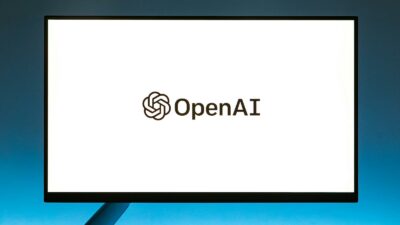
A driver removed his hands from the wheel of the moving bus on East 14th Street to signal that a computer had taken over, steering in response to cues from the tiny magnets, which were embedded in the pavement.
With the driver controlling speed but not direction, the 60-foot-long bus cruised in a straight line until pulling over to a bus stop with uncanny accuracy — leaving a gap of only a half-inch between the bus and the curb.
“One finger’s width. That’s it,” exclaimed Han-Shue Tan, a UC Berkeley research engineer, after exiting the bus to check the performance of the guidance system he helped design. He fit his finger snugly into the gap between the curb and each of three doors on the long bus.
“It’s this precision that can make public transit more efficient and reliable,” Tan said. “You can get the precision of a rail system with the flexibility of a bus. It’s like making buses into light rail.”
The test rides Friday morning were limited to news reporters, researchers and public transit officials because the guidance system needs more testing before it can be used to carry fare-paying passengers.
But UC Berkeley and Caltrans officials, who are partners in the guidance system, said they believe it can
make buses speedier, more reliable and smoother, luring more people to switch from cars to public transit.
Bus drivers take many seconds to maneuver their vehicles into place at bus stops.
Gaps often are left between curbs and buses, causing delays as passengers step down onto the street and then up onto the bus. Deploying wheelchair lifts to load disabled passengers causes more delays.
All those delays could be minimized or eliminated if a new automated guidance system could place buses swiftly against curbs for smoother loading, researchers said.
“We think this technology could make public transit more efficient and persuade more motorists to leave their cars at home,” said S. Sean Nozzari, Caltrans regional deputy director for transit operations.
Prior to the demonstration, Caltrans and UC Berkeley’s California Partners for Advanced Transit and Highways tested the bus in a Richmond lot.
Then crews inserted tiny magnets — no bigger or stronger than refrigerator magnets — along a mile of East 14th Street.
Sensors on the bus bottoms detected the magnetic field waves and a computer on board gave the bus driving directions.
The Alameda Contra Costa Transit District might use the system in its proposed bus-only lanes, which are under consideration for some busy areas in Berkeley, Oakland and San Leandro.
The guidance system also could improve speed and on-time performance of buses on regular routes, said Jim Cunradi, AC Transit’s bus rapid transit project manager.
[Check it Out: MercuryNews]

Frank Wilson is a retired teacher with over 30 years of combined experience in the education, small business technology, and real estate business. He now blogs as a hobby and spends most days tinkering with old computers. Wilson is passionate about tech, enjoys fishing, and loves drinking beer.










